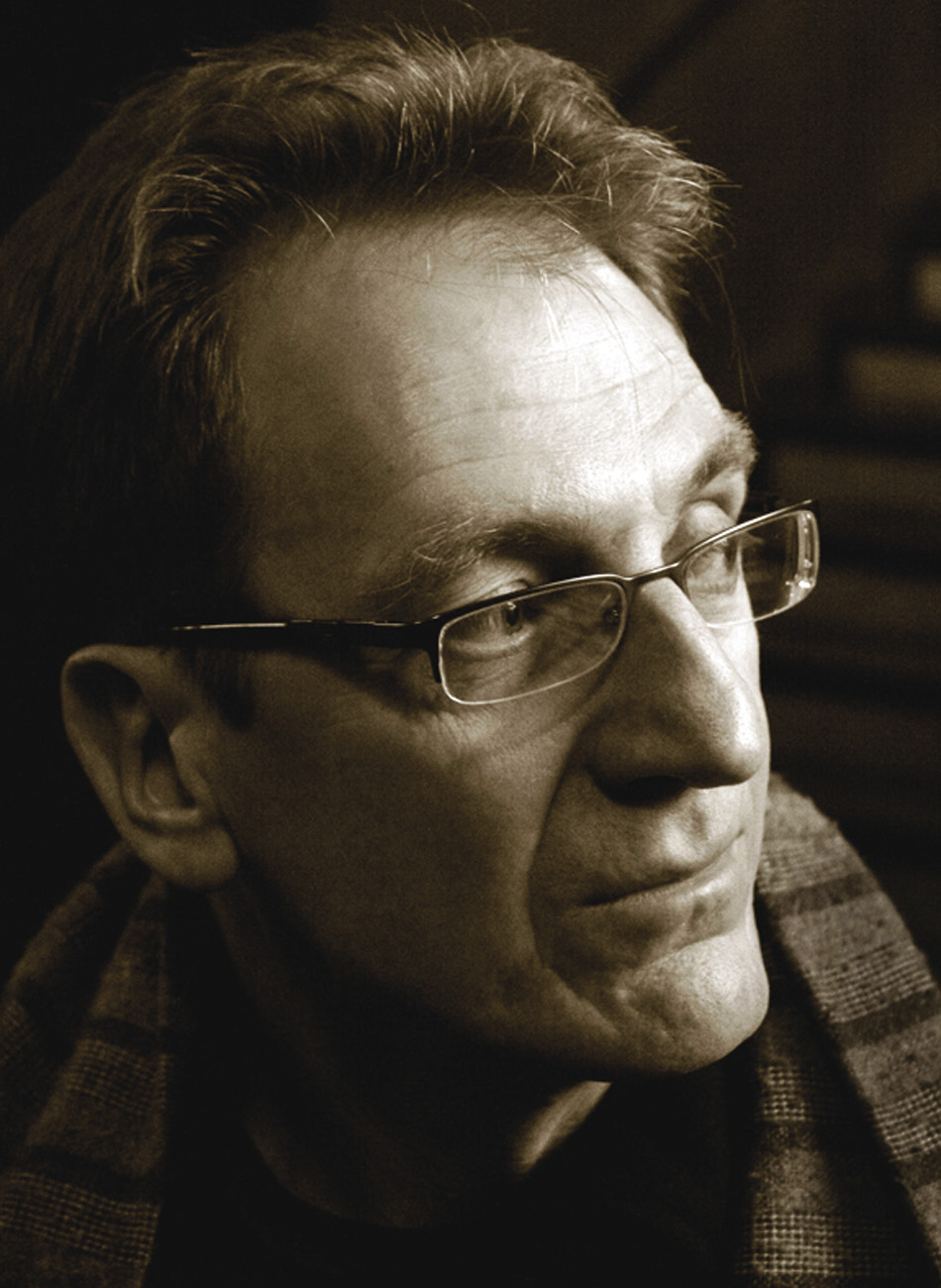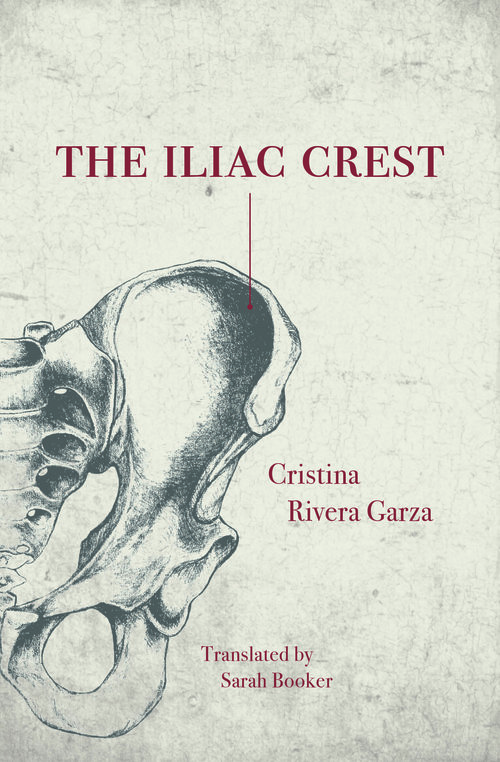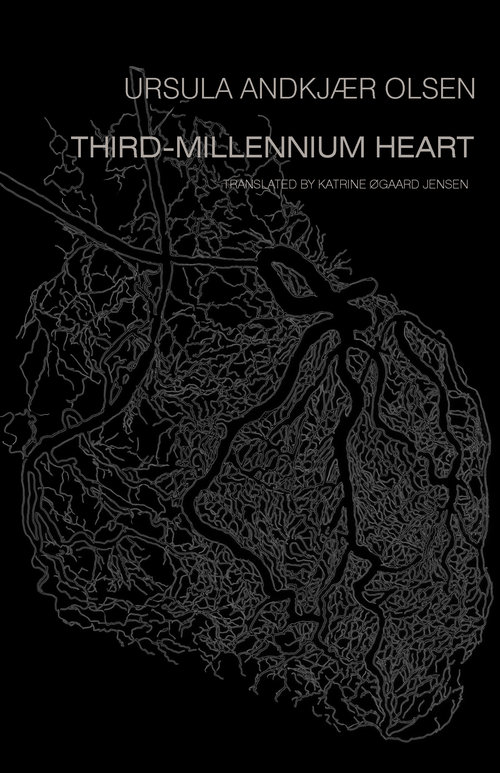
Issue 50 — Winter 2018
Features
Bakkhai by Euripides and Anne Carson
The Bakkhai continues to be one of Euripides’s (c. 484-406 b.c.e.) most popular plays to stage, translate, and interpret, even though it was never performed in its author’s lifetime. The ancient Greek playwright and Athenian wrote The Bakkhai in the last few years of his life in Macedonia, where he had fled after becoming disillusioned with his native city-state. The play was found among his papers after his death and produced posthumously by either his nephew or his son at the Dionysia, the festival held annually for the eponymous god in Athens. The drama presents the god Dionysos arriving in Thebes disguised as a mortal to establish his cult in that city and exact a brutal punishment on his cousin, King Pentheus, who denies the existence of the god. Anne Carson’s unconventional new translation of The Bakkhai is a fitting interpretation of what is arguably Euripides’s most enigmatic tragedy.
The Novels of Jenny Erpenbeck
Jenny Erpenbeck’s three recent novels are about displaced people, their lives swept here and there by mandates of poverty, anti-Semitism, war, and political crusade. Visitation and The End of Days trace the same swath of German history, stretching in both cases from about 1910 to 2000. Erpenbeck’s latest novel, Go, Went, Gone, is also about the precarious lives of outcasts in Germany. They are refugees from Africa, forced out of Libya in 2011 and grouped in a shelter in Berlin three years later. Their lives are as thin and as ruled by seemingly senseless laws as that of the Jews who fled and hid in her earlier novels. The huge difference between this new book and the novels that came before is that the luminous passing of lifetimes has been condensed to a few months in the present day. The fairy flickering that moved her characters through decades has settled down into a gray, newspapery light. Go, Went, Gone is less a transformation of material than a shaping of it, and its luster is low. It pushes us to think about the uses of art, and what kinds of projects the politically committed can pull off in this current moment of explicit racism and unchecked power.
From Johannesburg 2004 to New York 2017: The Exploded View by Ivan Vladislavić
Whether The Exploded View is a novel in four parts or a collection of four longish stories is a question akin to whether South Africa is a nation of peoples or a collection of nations. The four parts of The Exploded View are indeed linked, through setting and theme, but it doesn’t have the marked through-line of the short story cycles that so often come out of MFA programs here in the U.S. For one thing, the links between stories are underplayed, their fragmentation being essential to the structure as well as the governing visual and epistemological theme. Vladislavić’s reluctance to give a whole and holistic image of post-apartheid South African society has earned him some critics. As the idiom has it, “when Johannesburg catches a cold, South Africa sneezes.” So a representation of the fractured, divided city, with little cause for optimism about those divisions being overcome, has been sometimes read as a sign of Afro-pessimism and willful naysaying of the entire national project. Now, in 2017, not only do these critiques seem quaint and outdated, stemming as they do from a moment of unfounded optimism when the “Rainbow Nation” and the “African Renaissance” seemed plausible projects, but The Exploded View also seems more globally relevant than ever. The world is sneezing, and while Johannesburg’s cold is not the cause, it is certainly one of the clearest presentations of the symptoms.
The Iliac Crest and Its Female Imposters
Cristina Rivera Garza’s The Iliac Crest is a novel riddled with holes, disappearances that have the effect of warping and obscuring the world its reader inhabits. If this book were to have a single guiding principle, it might be these words: “Disappearance is contagious. Everyone knows this.” The narrator’s confidence in this fact is a bit alarming, and may come as news to the reader. Is disappearance a physical illness and this book some kind of existential science fiction treatise? Well, yes and no. It’s hard to assert definitively just what this book is, although what is clear is that, in Rivera Garza’s world, disappearances are not unconnected—they propagate through a chain reaction, through physical contact, as the narrator goes on to explain almost scientifically, as if we were dealing with an outbreak of the flu.
Thoreau’s Questions
Henry David Thoreau didn’t like questions, or so he sometimes said.“ The wise answer no questions,—nor do they ask them,” he wrote in his Journal in 1841. In 1850 he wrote, “I do not love to entertain doubts and questions.” Yet questions were at the heart of Thoreau’s lifelong journey of self-exploration. His Journal itself, the mine from which nearly all his literary work was quarried, began with a question, thought to be posed to the freshly minted Harvard graduate by his Concord neighbor Ralph Waldo Emerson. “’What do you do now?’ he asked. ‘Do you keep a journal?’ So I make my first entry today.”
The French Invasion
The conference has been called “epochal,” “a watershed,” “a major reorientation in literary studies,” “the French invasion of America,” the “96-gun French dispute,” the equivalent of the Big Bang in American thought. To hear the superlatives, one would have thought that “The Languages of Criticism and the Sciences of Man” symposium held at Johns Hopkins for a few frantic days from 18 to 21 October 1966 was the first gathering of its kind ever held. It wasn’t, but it did accomplish a feat that changed the intellectual landscape of the nation: it brought avant-garde French theory to America. In the years that followed, René Girard would champion a system of thought that was both a child of this new era and an orphan within it. He was at once proud of his role in launching the symposium, and troubled by some of its consequences. Let us consider what happened during this watershed autumn.
Interviews
“The Book Upside Down”: A Conversation on Ricardo Piglia
Piglia used to say that everything he wrote—his novels, his short stories, his essays—were a mere excuse in order to one day publish his diaries. So, by the time he finally sat down to transcribe them, they had become mythical. The impressive thing is that they didn’t disappoint at all. On the contrary, they remain perhaps the clearest expression of his conceptual poetic. A shinning exploration of what it could mean both to devote a life to literature, as well as read a life as literature. They provide a wonderful final touch to his life’s work and, despite their absolute singularity, I think they should be read in tradition of the best diary writers, authors that Piglia admired, like Pavese, Kafka, and Gombrowicz.
The Cristina Rivera Garza Interview
I am prone to write in between genres (remember that, in Spanish, género translates as both gender and genre). I am always interested in what happens there, in that middle ground or limbo. My suspicion is that relevant, interesting operations are met, and at times resolved, in those spaces. It’s a lucha libre of sorts, where the tools usually associated with one genre (verse to poetry, for example, of paragraph to prose) are subverted and diverted. Most contemporary works I read tread on those turbulent waters called cross-genre. The adjective I have used to describe these works is colindante, a term that describes what is both contiguous and colliding.
The Anne Carson Interview
As I was interviewing the classicist, poet, and author Anne Carson in June, 2017 via e-mail about her new translation of The Bakkhai, the question-and-answer process felt like a consultation with the ancient Pythia. Much like an ancient Greek attempting to get an answer from the priestess of Apollo, I had to go through a few layers—book publicist and agent—and the answers I received back can best be described as intriguing and esoteric; they varied in length from a few words to a paragraph to no response at all. Every reply was also written in all lower case, including the first-person singular “i,” an idiosyncrasy that seemed almost playful, and is something I usually see in the prose or text messages of a student or a younger person. Like a Greek hearing those ambiguous missives given by the Pythia, I was repeatedly surprised by the puzzling, thought-provoking answers I received.
Reviews
Third Millennium Heart by Ursula Andkjær Olsen
Award-winning poet Ursula Andkjær Olsen’s Third Millennium Heart, translated into English by Katrine Øgaard Jensen, is narrated from the point of view of a monstrous, cyborg organ, a heart which is a sprawling, rumbling mega-structure; a cornubation made up of anti-heroic, Archigram-like constructions—fantastical towers and castles. From the heart’s radical connectivity emerges a puissant female voice, who unleashes a torrent of invectives, affirmations and auguries against capitalist market forces, patriarchy, toxic manhood, rape trauma, and the perversion of Western culture. A kind of germinal energy emanates from the fractal asymmetry of the 200-odd poems in this collection, like the vitality of patterns in river systems, tree branches and lightening bolts. In a state of interminable flux, the poems push back against facile interpretation even as they pull the reader closer towards self-knowledge.
The Tongue of Adam by Abdelfattah Kilito
No longer than the lead piece in the latest literary quarterly, yet unearthing a teleology for some of humanity’s oldest stories, The Tongue of Adam sets a reader thinking of noble forebears. W.G. Sebald comes to mind, though there’s no meandering involved, and Anne Carson, though there’s no anachronism or toying with form. Jorge Luis Borges, especially, casts his shadow, given the erudite cool with which this text handles Adam and Eve, Eden and Babel, effortlessly switching between Quranic (as spelled by Kilito) sources and Judeo-Christian. Similar material, in the hands of the great Argentine, resulted in amazing aesthetic objects, and to say the latest from Abdelfattah Kilito doesn’t shrivel in comparison—well, that’s high praise. Even more noteworthy, however, may be what the book accomplishes, at this hour of the world, for Arab civilization in general.
The Sacred Era by Yoshio Aramaki
Born April 12, 1933, Yoshio Aramaki’s writing comes to us from a different time. His novel The Sacred Era, originally published in Japanese in 1978, has more in common with classic American sci-fi short story writers like Philip K. Dick, Isaac Asimov, Ray Bradbury—sharing their preoccupation with wonky metaphysics, biblical allegories, and performative misogyny—than with speculative fiction writers working in the present day. He leads readers down the same well-trodden genre path where impoverished young men discover they are, despite an often remarkable lack of initiative, destined for great things. But Aramaki’s brilliant leaps of imagination and use of experimental, non-linear plot structures are too ambitious for the resulting work to be dismissed as outdated or derivative.
March 1917: The Red Wheel: Node III: Book 1 by Aleksandr Solzhenitsyn
In 1972 an English version of Aleksandr Solzhenitsyn’s August 1914 appeared. It is the first node (then called a “knot”) of a sequential novel with the overall title The Red Wheel. In 1989 an expanded and freshly translated edition came out in English, but it took until 1999 for the second volume, November 1916, to be published. Since then other books by Solzhenitsyn have reached English readers, most recently Apricot Jam: And Other Stories (2011), but we have had to wait until now to start reading the first book of four comprising March 1917, which will be followed by the two books that make up April 1917, thus bringing this mega-novel to a close. The books share common approaches—fictional characters mingling with historical figures, the use of actual telegrams, transcripts of State Duma debates, and newspaper accounts (when applicable, as newspapers weren’t always published), and an impressionistic screenplay treatment of mob movements—and the attempt to recapture for a wide audience (but foremost, one suspects, for Solzhenitsyn’s countrymen) the multitudinous events that culminated in the Revolution. Yet there is never one definitive story, one perspective, or one inevitable outcome.
A Long Curving Scar Where the Heart Should Be by Quintan Ana Wikswo
Quintan Ana Wikswo’s A Long Curving Scar Where the Heart Should Be demands to be read and lived with for a few days or weeks—as long as you like, it’s got enough spirit and thought and music and visual interest to hold you. A considerable and openhearted novel, it is at once wild and sophisticated, poetic and prosaic. Although it is Wikswo’s first novel, it shows her to be intrepid storyteller, as she confronts issues of race, sex, gender, religion, and desire with an appreciation toward their complexity and oft-chaotic natures.
Cormac McCarthy Full Coverage
 Cormac McCarthy Full Coverage
Cormac McCarthy Full Coverage
The Lydia Davis Symposium
 The Lydia Davis Symposium
The Lydia Davis Symposium
Who Was David Foster Wallace?
 Read Who Was David Foster Wallace?
Read Who Was David Foster Wallace?
Full Coverage: Roberto Bolano
 Full Coverage: Roberto Bolano
Full Coverage: Roberto Bolano
Tweets by @ScottEsposito
Original Translations
 Read original translations of international literature
Read original translations of international literature
Murakami Roundtable
 Read the Murakami Roundtable
Read the Murakami Roundtable
Previous Issues
• Issue 43: Spring 2016
• Issue 42: Winter 2015
• Issue 41: Fall 2015
• Issue 40: Summer 2015
• Issue 39: Spring 2015
• Issue 38: Winter 2015
• Issue 37: Fall 2014
• Issue 36: Summer 2014
• Issue 35: Spring 2014
• Issue 34: Winter 2014
• Issue 33: Fall 2013
• Issue 32: Summer 2013
• Issue 31: Spring 2013
• Issue 30: Winter 2013
• Issue 29: Fall 2012
• Issue 28: Summer 2012
• Issue 27: Spring 2012
• Issue 26: Winter 2012
• Issue 25: Fall 2011
• Issue 24: Summer 2011
• Issue 23: Spring 2011
• Issue 22: Winter 2011
• Issue 21: Fall 2010
• Issue 20: Summer 2010
• Issue 19: Spring 2010
• Issue 18: Winter 2010
• Issue 17: Fall 2009
• Issue 16: Summer 2009
about
Park Shore Properties
yacon syrup
San Diego Bankruptcy Attorney
Hire Dedicated Developers
Motorhome Republic USA
birthing classes
The Best Libraries Use Netfloor USA Cable Management Access Floors
Job Malaysia
health information technology
bankruptcy attorney san diego
personal injury attorney miami
Orlando Steel Buildings
roofing maple grove mn
















